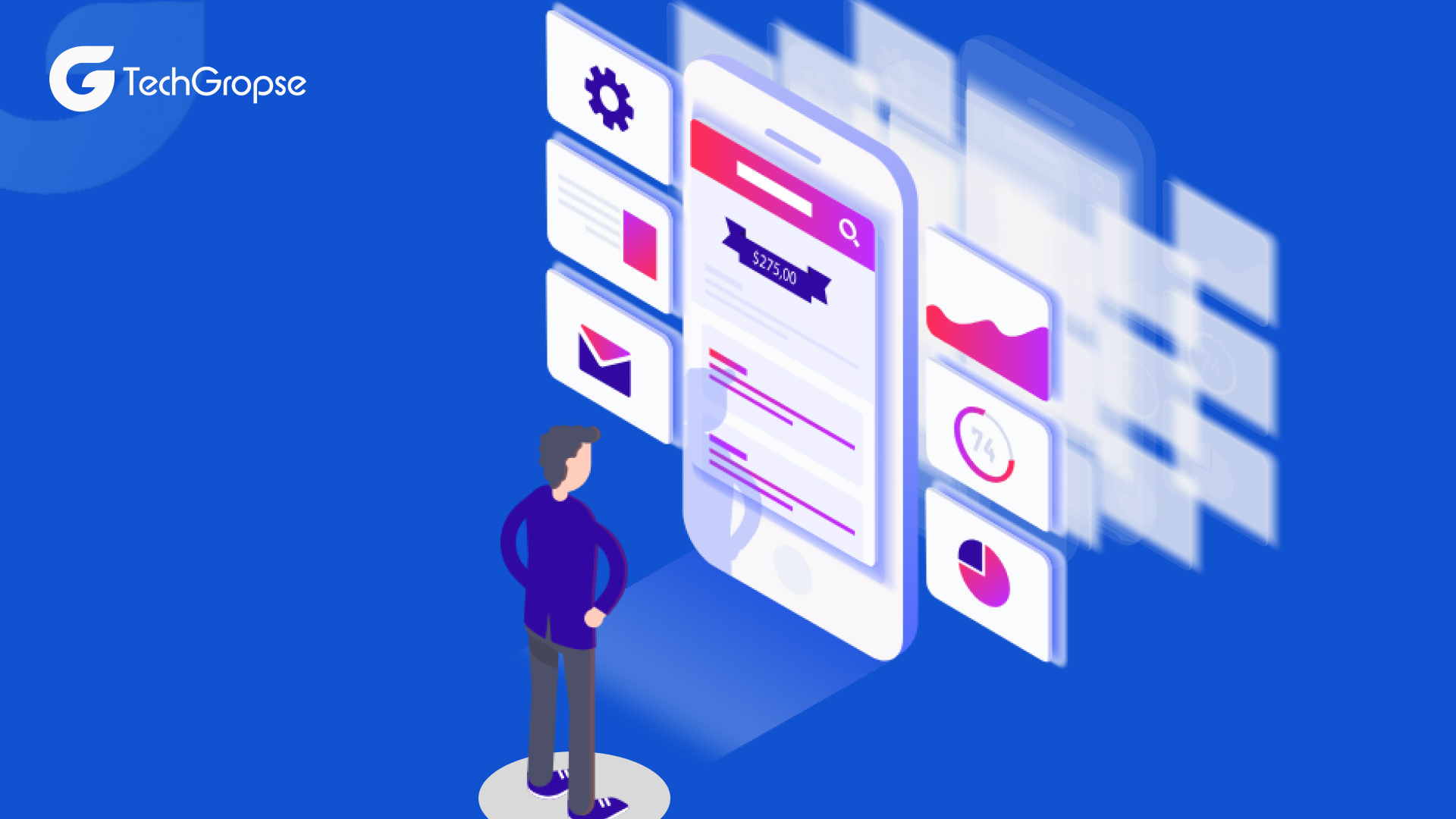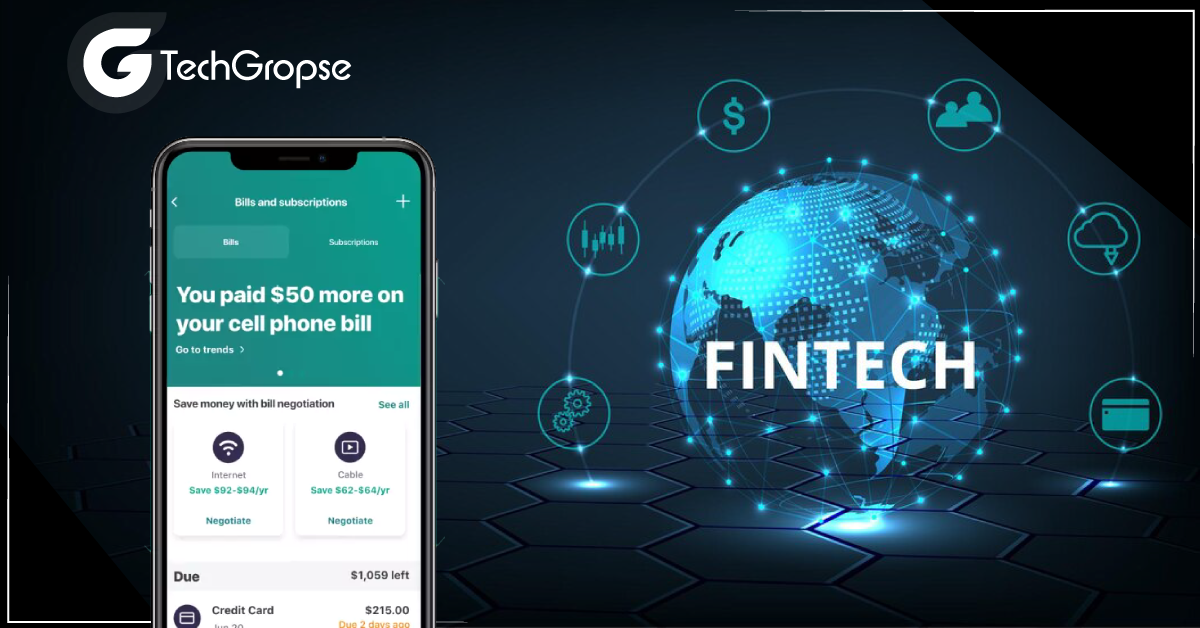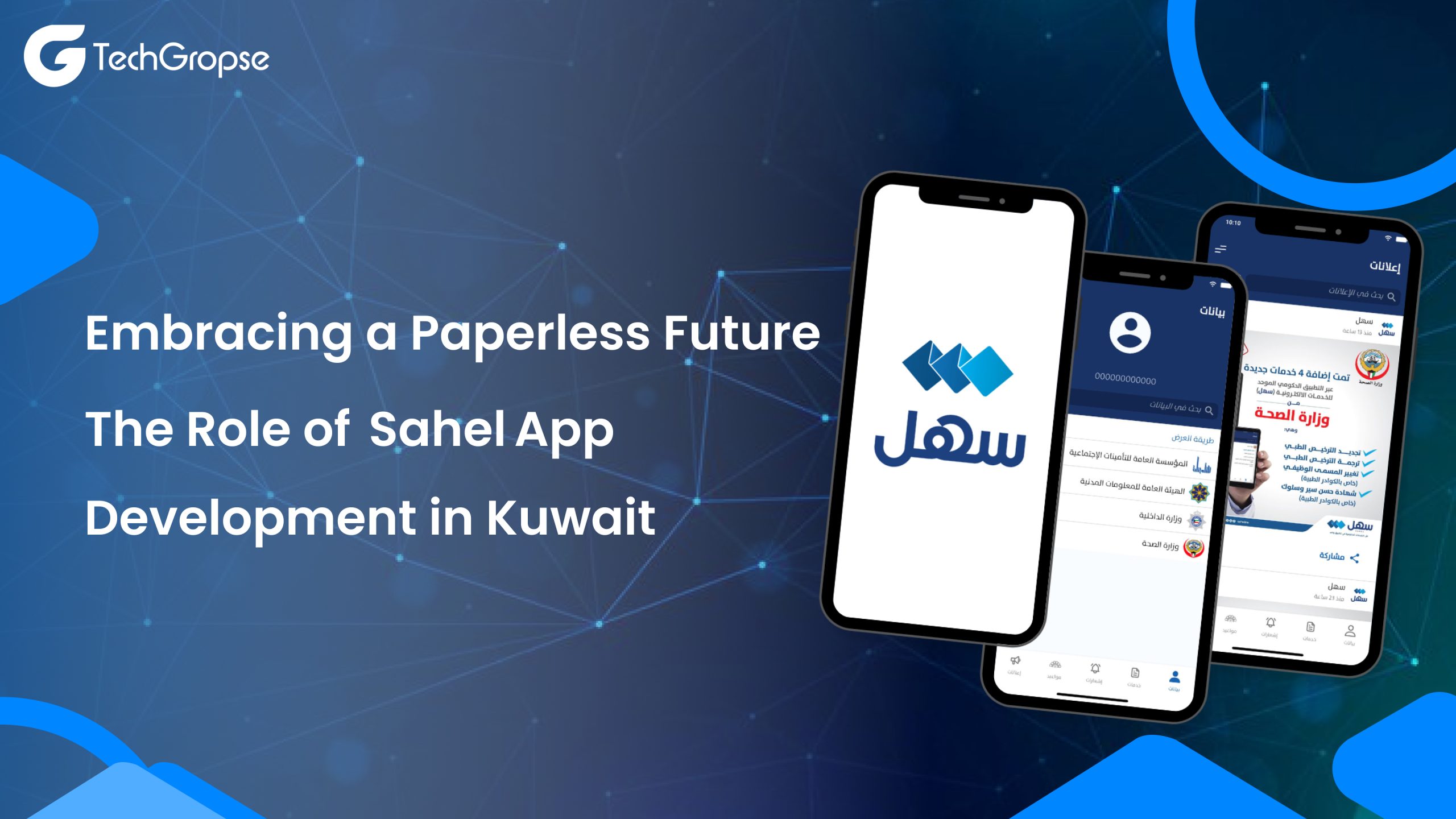|
“To build a fintech app like Mint, prioritize user-centric design, robust security, and outstanding financial features that facilitate personal finance management.” |
Struggling to manage your finances? Imagine having a personal financial assistant in your pocket! A fintech app like Mint can transform your financial life.
Welcome to the modern age where technology rules the world. If you want to reach your audience quickly, the best way to do it is through a mobile app.
Having a mobile app for your brand is essential in today’s tech-savvy world, no matter what industry you’re in.
Fintech app like Mint is an important part of technology that helps with online payments. In India, more than 7,000 fintech startups are working on many stuff.
In the Americas, there are about 13,100 fintech companies, which is much more than just a year ago. It’s pretty amazing how much fintech is growing and changing the way we pay for things online.
When it comes to managing your money, fintech app development solutions are a game-changers. Everyone wants to keep track of their spending and budgeting, and apps like Mint make it easy to do that.
Whether you are looking to save more, spend wisely, or plan for future goals, a fintech app like Mint is your ultimate financial companion.
So, if you want to build an app like Acorns, keep reading!
What is Mint Fintech App?
Before proceeding further, it is important to know what the Mint app is.
Mint is a free app that helps you manage your money. It brings all your financial information into one place.
With the help of the Mint app, you can see where your money goes and how you can save more.
With Mint, you can:
|
Unveiling the Latest Market Statistics of Fintech Apps in 2024
Right now, the Mint app has been downloaded over 10 million times on the Google Play Store and has a super high rating of 4.8 on the Apple Store.
For more than 10 years, the Mint app has been helping lots of people keep track of their money.
It is like a must-have for anyone who wants to stay on top of their finances in today’s world.
|
Discover the Best Alternatives to Mint: Top 10 Fintech Applications
| Fintech App | Description | Downloads (Estimate) | Active Users (Estimate) |
| 1. Personal Capital | Offers tools for budgeting, investing, and retirement planning. | 1,000,000+ | 500,000+ |
| 2. YNAB (You Need a Budget) | Focuses on budgeting and expense tracking with an emphasis on giving every dollar a job. | 500,000+ | 300,000+ |
| 3. PocketGuard | Helps users track spending, set savings goals, and manage budgets. | 1,000,000+ | 500,000+ |
| 4. Clarity Money | Provides features for budgeting, expense tracking, and saving money on recurring bills. | 500,000+ | 200,000+ |
| 5. Truebill | Focuses on managing subscriptions, lowering bills, and tracking spending. | 1,000,000+ | 400,000+ |
| 6. Albert | Offers automated savings, budgeting tools, and investment advice. | 500,000+ | 250,000+ |
| 7. GoodBudget | Based on the envelope budgeting method, allows users to allocate money to different categories. | 1,000,000+ | 300,000+ |
| 8. Tiller Money | Integrates with spreadsheets to provide customizable budgeting and financial tracking. | 100,000+ | 50,000+ |
| 9. Honeydue | Designed for couples to manage finances together, including budgeting and bill tracking. | 500,000+ | 150,000+ |
| 10. Spendee | Helps users track expenses, create budgets, and analyze spending habits. | 1,000,000+ | 400,000+ |
Want to Know How to Build a Fintech App Like Mint? Let’s Start
If you plan to build a fintech app like Mint, you are stepping into a world where innovation meets financial management. You must partner with a fintech app development company.
1. Understanding the Market and User Needs
Before diving into the fintech app development process, it is crucial to understand the market landscape and identify user needs.
Conduct thorough market research to analyze existing fintech solutions, identify gaps, and uncover opportunities for innovation.
Additionally, collect insights from potential users through surveys, interviews, and competitor analysis to understand their pain points and preferences.
2. Defining Core Features and Functionality
Based on your research findings, define the core features and functionality of your fintech app.
Mint offers a range of features, including budgeting tools, expense tracking, bill payment reminders, credit score monitoring, and investment tracking.
Prioritize features based on their importance to your target audience and the value they provide in helping users manage their finances effectively.
3. Selecting the Right Technology Stack
When you plan to build a fintech app like Mint, choose the appropriate technology stack for your app. You should consider factors such as platform compatibility, scalability, security, and development expertise.
Common technologies used in Mint clone app development include
| Category | Option 1 | Option 2 |
| Cross-Platform Development | React Native | Flutter |
| Backend Development | Python | Java |
| Cloud Services | AWS (Amazon Web Services) | Azure (Microsoft) |
Comparison Details
React Native (Cross-Platform Development)
| Pros | Cons |
|
|
Flutter (Cross-Platform Development)
| Pros | Cons |
|
|
Python (Backend Development)
| Pros | Cons |
|
|
Java (Backend Development)
| Pros | Cons |
|
|
AWS (Cloud Services)
| Pros | Cons |
|
|
Azure (Microsoft)
| Pros | Cons |
|
|
Choosing between these technologies depends on your project requirements:
- React Native vs. Flutter: For faster development with web integration, choose React Native. For performance-critical applications with a rich UI, choose Flutter.
- Python vs. Java: For quick development and flexibility, choose Python. For performance and large-scale enterprise applications, choose Java.
- AWS vs. Azure: For a wide range of services and global reach, choose AWS. For better integration with Microsoft services and hybrid solutions, choose Azure.
4. Designing an Intuitive User Interface
An ewallet app development company designs an intuitive and user-friendly interface that simplifies financial management tasks for your users.
Pay attention to usability, accessibility, and visual appeal, ensuring that the app is easy to use and understand.
Use wireframes and prototypes to visualize the app’s layout and gather feedback from users to refine the design.
5. Implementing Robust Security Measures
Security is paramount in fintech apps, given the sensitive nature of financial data involved. Hire fintech app developers who implement robust security measures.
It includes encryption, secure authentication methods like biometrics or two-factor authentication, and compliance with regulations such as GDPR and PCI DSS, to protect users’ personal and financial information.

6. Integrating with Financial Institutions’ APIs
To provide features like account aggregation and transaction categorization, integrate your app with financial institutions’ APIs.
It allows users to securely link their bank, credit card, and investment accounts to the app, providing a comprehensive view of their financial status in one place.
7. Developing Advanced Financial Algorithms
Implement advanced algorithms to analyze users’ financial data and provide actionable insights.
It could include spending trends, budget recommendations, personalized financial advice, and alerts for potential savings opportunities or financial risks.
8. Incorporating Personalized Notifications
Well, a mobile app development company set up personalized notifications and alerts to keep users informed about important financial events.
It includes upcoming bills, unusual spending patterns, or changes in their credit score.
Tailor notifications based on user’s preferences and behavior to ensure relevance and timeliness.
9. Conducting Comprehensive Testing
Thoroughly test the app across different devices, operating systems, and scenarios to ensure functionality, security, and performance.
An Android app development company uses automated testing tools and manual testing techniques. It helps to identify and address any bugs or issues before launching the app to the public.
10. Launching and Iterating
Once testing is complete, launch your fintech app in the app stores and gather feedback from users.
Hire mobile app developers who collect user feedback, market trends, and regulatory changes to improve features, enhance performance, and optimize the user experience.
11. Ensuring Compliance with Regulations
Ensure compliance with relevant financial regulations, such as KYC (Know Your Customer), AML (Anti-Money Laundering), and data protection laws.
Stay updated on regulatory changes and adapt your app accordingly to avoid legal issues and maintain users’ trust.
12. Providing Ongoing Support and Maintenance
Fintech app development services offer ongoing customer support to address user inquiries and issues.
Regularly maintain and update the app to fix bugs, address security vulnerabilities, and add new features based on user feedback and market demand.
10 Reasons Why a Fintech App Like Mint is Essential in 2024

1. Financial Tracking and Management
- Comprehensive View: Users can link multiple bank accounts, loans, credit cards, and investments to get a comprehensive view of their finances in one place.
- Automatic Categorization: Transactions are automatically categorized, making it easier to track spending habits.
2. Budgeting Tools
- Customizable Budgets: Users can set budgets for different spending categories (e.g., groceries, and entertainment) and receive alerts when they are close to their limits.
- Spending Insights: The app provides insights into spending patterns, helping users identify areas where they can save money.
3. Goal Setting
- Financial Goals: Users can set financial goals such as buying a house, saving for a vacation, or paying off debt, and the app helps track progress towards these goals.
- Progress Tracking: Visual tools and charts to monitor progress, keeping users motivated.
4. Bill Reminders
- Due Date Alerts: Users receive notifications for upcoming bills and due dates, helping them avoid late fees and penalties.
- Automated Payments: Option to set up automated bill payments directly through the app.
5. Credit Score Monitoring
- Credit Score Access: Many apps provide free access to users’ credit scores and detailed reports on factors affecting the score.
- Credit Improvement Tips: Personalized tips to help improve credit scores over time.
6. Security Features
- Data Encryption: High levels of encryption to protect sensitive financial information.
- Multi-Factor Authentication: Added layers of security to prevent unauthorized access.
7. Investment Tracking
- Portfolio Management: Users can track their investment portfolios, including stocks, bonds, and mutual funds.
- Performance Insights: Real-time updates and insights into the performance of their investments.
8. Expense Reports
- Detailed Reports: Monthly and annual expense reports to help users understand their financial habits.
- Export Options: Ability to export reports to spreadsheets or other formats for further analysis.
9. Savings Recommendations
- Personalized Advice: Tips and recommendations tailored to users’ financial situations to help them save more effectively.
- Discount and Deal Alerts: Notifications about discounts, deals, and offers that can help save money.
10. User-Friendly Interface
- Intuitive Design: Easy-to-navigate interfaces that make financial management accessible to users of all tech-savviness levels.
- Mobile Accessibility: Full functionality is available on mobile devices, allowing users to manage finances.
Boost Your Financial Management: Essential Features for Fintech Apps like Mint in 2024

| Feature Category | Feature Description |
| Account Linking | – Connect multiple bank accounts, credit cards, loans, and investments. |
| Transaction Categorization | – Automatically sort transactions into categories.
– Allow users to create custom categories. |
| Budgeting Tools | – Create and manage budgets for different spending categories.
– Send alerts when budgets are close to being exceeded. |
| Financial Goals | – Set and track savings or debt repayment goals.
– Show progress with visual indicators. |
| Bill Management | – Remind and track users of upcoming bills.
– Option to set up automated bill payments efficiently. |
| Credit Score Monitoring | – Provide access to credit scores.
– Offer tips to improve credit scores. |
| Security Features | – Use encryption to protect data.
– Support multi-factor and biometric authentication. |
| Investment Tracking | – Monitor investment portfolios.
– Show performance updates and insights. |
| Expense Reports | – Generate monthly and annual spending reports.
– Allow users to export reports. |
| Savings Recommendations | – Give personalized money-saving tips.
– Alert users to discounts and deals. |
| User-Friendly Interface | – Design an easy-to-use interface.
– Ensure full functionality on mobile devices. |
| Customer Support | – Include an in-app chat feature.
– Provide a help center with FAQs. |
| Data Visualization | – Use charts and graphs for financial data.
– Create a customizable dashboard. |
| Notifications and Alerts | – Allow users to set up custom alerts.
– Send push notifications for important events. |
| Additional Considerations | – Follow financial and data protection laws (Regulatory Compliance).
– Build the app to handle growth (Scalability). – Support integration with other financial tools (Third-Party Integrations). |
How Much Does It Cost to Build a Fintech App Like Mint?
Creating a fintech app like Mint involves various factors that can influence the fintech app development cost, including development hours, features, complexity, design, and location of the development team.
Here is an approximate breakdown cost to build a fintech app:
| Component | Estimated Cost |
| Project Planning | $5,000 – $15,000 |
| UI/UX Design | $10,000 – $30,000 |
| Frontend Development | $20,000 – $50,000 |
| Backend Development | $30,000 – $80,000 |
| Database Setup and Management | $5,000 – $15,000 |
| Third-party Integrations | $10,000 – $30,000 |
| Security Features | $5,000 – $20,000 |
| Quality Assurance | $10,000 – $25,000 |
| Project Management | $5,000 – $15,000 |
| Legal and Compliance | $5,000 – $20,000 |
| Miscellaneous | $5,000 – $15,000 |
| Total Estimated Cost | $100,000 – $300,000+ |
Note: These are rough estimates and can vary significantly based on specific requirements, developer rates, and project scope. Additionally, ongoing maintenance and updates should be considered part of the overall Acorns app development cost.
Closing Thoughts: Let’s Build Your Personal Finance App
It’s time to wrap up our chat to build a fintech app like Mint. We hope you have got all the info you need to kickstart your journey. If you have any price questions you can get the fintech app development cost in USA in detail.
If you have some great ideas to make finance management even better for users, why not dive into developing your personal finance app?
Imagine offering users easy ways to track investments, stick to budgets, handle finances, and manage their money. You could be the hero helping folks everywhere handle their finances like a pro.
Starting your personal finance app isn’t just about business success. It’s about making life simpler for users, giving them the tools they need to rock their financial goals.
So, if you have a layout or approach to build a fintech app like Mint that could make a real difference, go for it.
With some dedication and creativity, you could create an app that changes the game for how people manage their money.
FAQ: How to Build a Fintech App Like Mint
1. What skills do I need to build a fintech app like Mint?
To build a fintech app like Mint, you will need a great understanding of programming languages like JavaScript, Swift (for iOS), or Kotlin (for Android). Knowledge of frameworks like React Native or Flutter can also be helpful. If you want to develop for iOS you must consult with an iPhone app development company.
2. How long does it take to develop a fintech app like Mint?
The time required to develop a fintech app like Mint can vary based on factors such as complexity, features, team size, and development approach. However, a rough estimate could range from six months to a year or more.
3. What are the key features I should include to build a fintech app like Mint?
When you plan to build an app like Stash you should add essential features to include:
- Account aggregation for tracking finances from multiple accounts.
- Budgeting tools to set and monitor spending limits.
- Transaction categorization to organize expenses.
- Goal setting and tracking for saving targets.
- Alerts and notifications for unusual spending or upcoming bills.
- Security measures like encryption and two-factor authentication to protect user data.

Hello All,
Aman Mishra has years of experience in the IT industry. His passion for helping people in all aspects of mobile app development. Therefore, He write several blogs that help the readers to get the appropriate information about mobile app development trends, technology, and many other aspects.In addition to providing mobile app development services in USA, he also provides maintenance & support services for businesses of all sizes. He tried to solve all their readers’ queries and ensure that the given information would be helpful for them.










